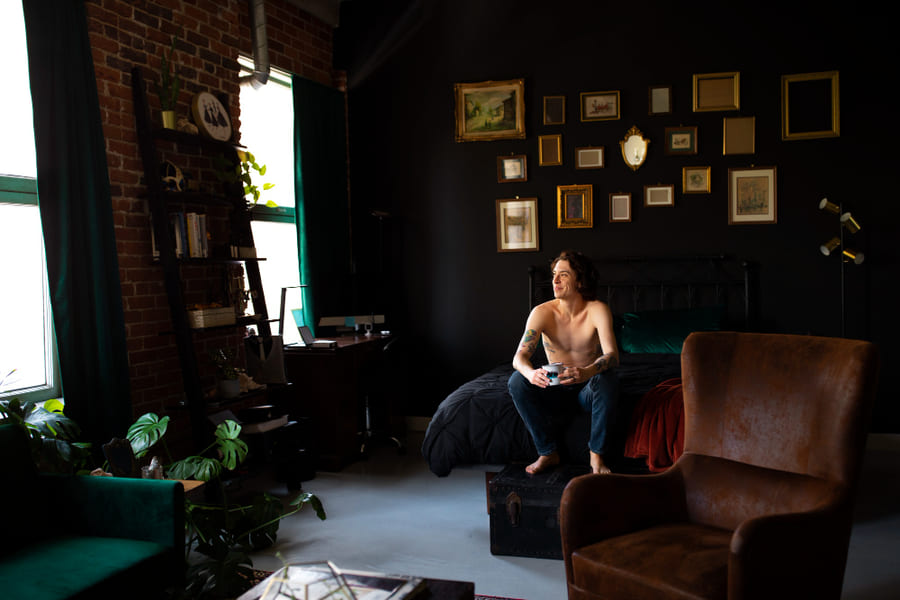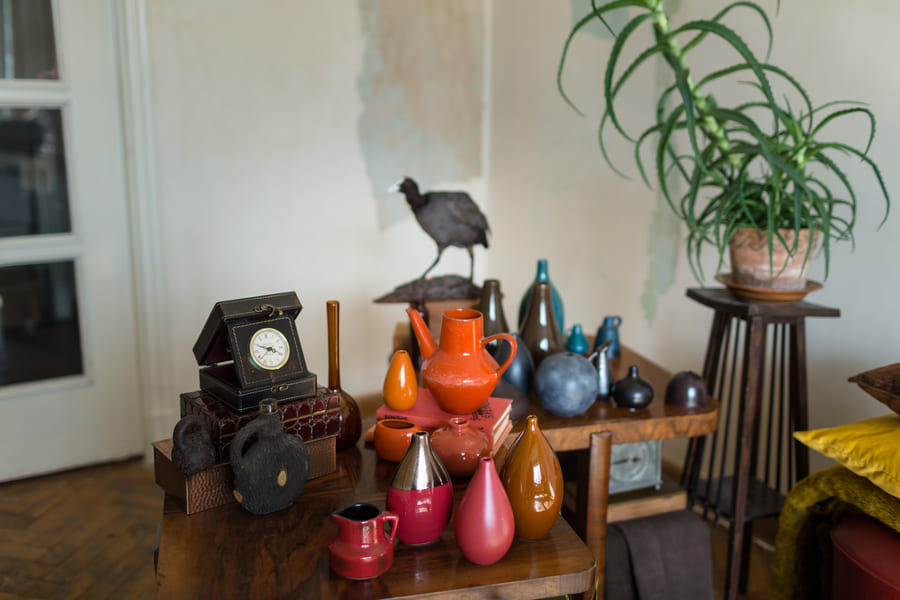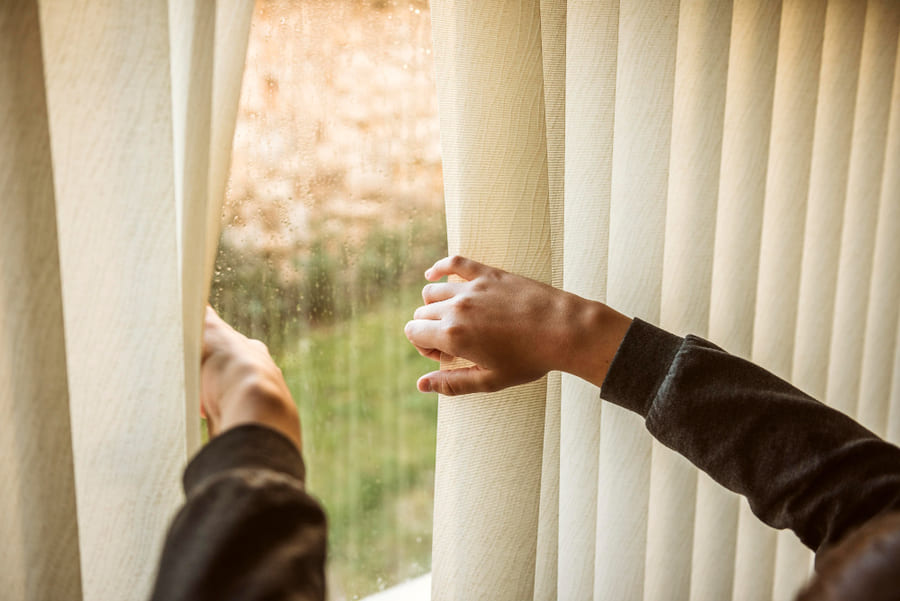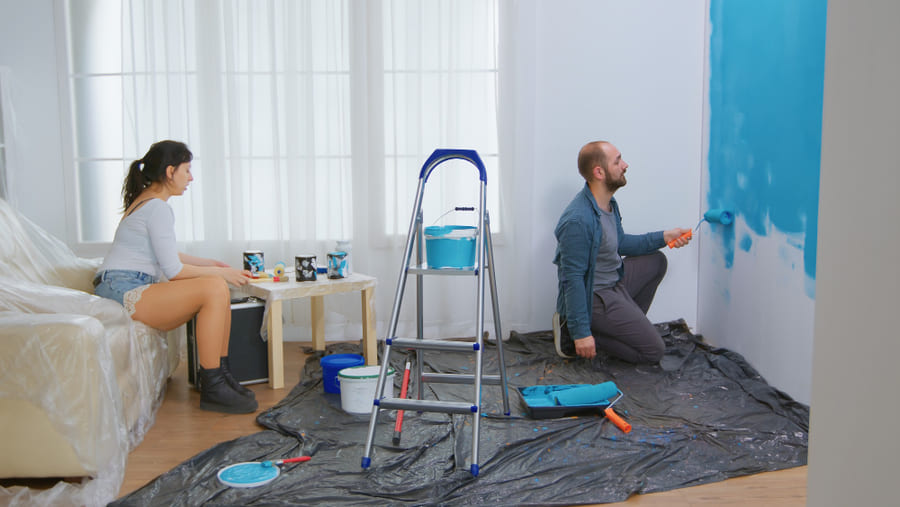When it comes to decorating your home, it is not just a matter of size but how we perceive that size! How we accessorize and how we style our homes can affect size perception regardless of square footage. Most of us have made decor choices which have made our home feel and look smaller than it is, creating an intimate feeling. When our decor choices have gone too far in the “cozy” direction, we begin to cross into clutter.
Fortunately, most of the decorating mistakes are completely fixable, without the need for renovations or spending tons of money, just better understanding of how color, layout, and lighting create a better perception of a room. In this article, you will find five decorating mistakes that may contribute to your home feeling smaller than it is, and quick, stylish solutions to create a more open space.
1. Using Too Many Dark Colors

Why It’s a Problem:
Dark colors are dramatic, moody and modern. However, it is easy for dark colors to overwhelm a room (especially smaller rooms) or when there is a lack of natural light and the dark color absorb whatever small amount of light there is. What should be sophisticated can easily feel claustrophobic.
How to Fix It:
You do not necessarily need to eliminate dark color altogether, simply balance the dark color with lighter colors. For example, if the dark color is to be an accent instead of your main wall color:
- Select navy blue and charcoal throw pillows instead of wall paint.
- Pick soft white, warm beige, or pale grey as the lighter neutral paint colors for all walls and any larger furniture.
- Utilize mirrors for light reflection and increase depth illusion.
Pro Tip: Use gloss finishes instead of matte. Gloss finishes reflect light better than matte. Even ‘adding a little gloss’ on the walls or furniture can help the space feel like more open space.
2. Choosing Disproportionate Furniture

Why It’s a Problem:
Having furniture too large for a room can make it feel cluttered but if you have some furniture that is too small for a room, it distorts the proportion of the room and can make it feel empty and awkward.
How to Fix It:
It all starts with measuring. Know your dimensions, understand your room dimensions, and try to picture the footprint of each piece you are looking to buy ahead of purchase. Look for scales of furniture that are comparable to the size of the space, when possible, but do not look to over take the space.
Here are smart swaps to consider:
- A love seat over a full size sofa in smaller living rooms.
- Furniture with exposed legs (as opposed to no legs like a skirt), allows for more visible floor space which causes the room to feel less heavy and bulky.
- Glass or acrylic coffee tables and dining chairs that visually “disappear” and help avoid visual bulk in the room.
Pro Tip: Multipurpose furniture such as storage ottomans and expandable tables add functionality to your space without adding space.
3. Poor Lighting Choices

Why It’s a Problem:
One of the most undervalued aspects of interior design is lighting. One ceiling fixture or worse, poor lighting creates harsh shadows and flattens a space making it smaller and less inviting.
How to Fix It:
Good lighting will have depth and dimension. Consider layers:
- Ambient light is your main source of light, ceiling fixtures or recessed lighting.
- Task light can include reading lamps, under counter kitchen lights, or desk lamps.
- Accent light can make a statement, like wall scones or string lights which add warmth and texture.
Natural light is also something to consider. Try not to block windows with heavy furniture or drapery. Use sheer curtains or blinds which can be completely pulled off to the side during the day. If you have only one or two windows, consider LED bulbs that simulate daylight to brighten your space without that cold, hospital fluorescent feel.
Pro Tip: An opposite wall mirror to a window will reflect light and double the brightness.
4. Clutter and Too Many Decorative Objects

Why It’s a Problem:
Getting a collection of things is easy over time: knick-knacks, books, candles, vases, framed pictures, etc. Too many pieces of decor can consume your space. If you have too much, instead of cozy it becomes just, crowded.
How to Fix It:
Editing is your best friend. Editing doesn’t mean you have to live like a minimalist, but it does mean you have to have standards on what is being put on display.
- To minimize visual clutter, group smaller items together on trays, or bowls.
- For surfaces and shelves, leave empty space for your eyes to rest.
If you enjoy changing your decor regularly, consider switching your decorative items seasonly. This way, you can keep a fresh home for yourself, while not over-crowding it.
Pro Tip: When in doubt on a surface, take one object away. Less is (almost) always more.
5. Hanging Curtains Incorrectly

Why It’s a Problem:
Believe it or not, the placement of curtains has a significant impact on changing the height and width of a room. When curtains are hung too low, or too narrow (just above the window frame), you will shorten the wall and retract and eliminate the windows to down-size the whole room.
How to Fix It:
The goal is to draw the eye up and out to create a feeling of taller ceilings and wider walls.
So do the following:
- Hang curtain rods higher, 4-6 inches above the window frame or even closer to the ceiling if you really want to create the feeling of vertical space.
- Extend the rod beyond the actual window, a good rule of thumb is 8-12 inches past the window on each side. This way, you can pull the curtains completely off the glass to let in the most amount of light.
- Look for light flowing fabrics, use natural fabrics like linen or cotton blends that will not visually weigh down the space.
Pro Tip: Floor-length curtains that just kiss the floor (or hover slightly above) will elongate the wall and add elegance, you do not have to have a heavy puddle.
Conclusion
You don’t have to get a bigger house to enjoy a bigger space. If you steer clear of these five mistakes so common in decorating and you incorporate a few of these sound solutions, you can easily go from an overcrowded, little cave, to a space that is bright, airy, and welcoming.
So remember, you will want to lighten your color, properly scale your furniture and the room’s space, open the light from outside as much as possible, thoughtfully curate your décor, and become a pro at hanging curtains.
Choose one of these options you can do today, whether that is to get furniture in a different position or switching out heavy drapes, and watch how quickly a space feels much larger. At times the difference in a home feeling spacious, is simply a more informed approach to style.

Numrah Fareed is a freelance writer and home organization enthusiast with a passion for practical, eco-friendly living. When not typing away at her desk, she’s experimenting with DIY cleaning hacks and helping readers simplify their routines one tip at a time.
